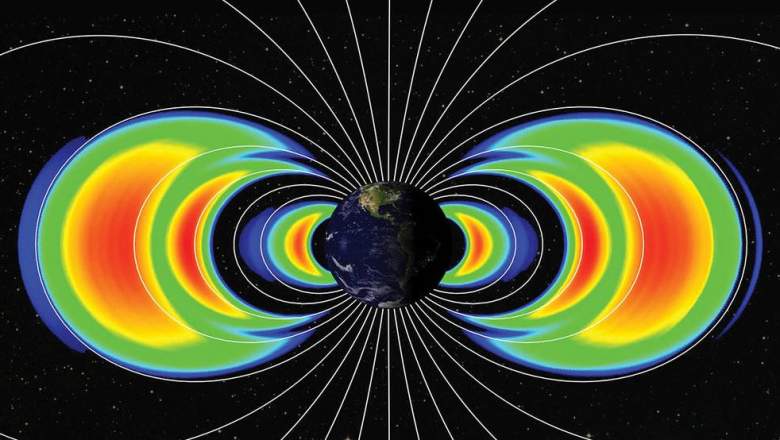
NASA
The Van Allen Belts are the next stop for the Falcon Heavy’s Tesla Roadster, but what are they? And why is this such a dangerous time for the mission? The long coast through the Van Allen Belts could last five to six hours. This leaves more things to chance, such as the fuel possibly freezing, oxygen vaporizing, and other issues that could hurt the rocket’s ability to reach trans-Mars injection. Problems at that stage might mean that the Roadster doesn’t escape Earth’s orbit but burns up in the atmosphere instead. Or it might just end up orbiting Earth for a while. But why are these belts so dangerous?
The Van Allen radiation belts are a region that scientists originally thought was void of particles, far above the Earth’s atmosphere. The region contains radiation levels far beyond what you’d expect from just cosmic rays, and scientists were surprised by their existence when they were first discovered. The Van Allen belts are Earth’s radiation belts. They’re two rings of energetic particles that surround the Earth. An inner belt is made primarily of protons and the outer belt is made mostly of electrons, according to NASA. They’re named after James Van Allen.
The belts are donut-shaped rings that surround the Earth, as a result of our magnetic field. The outer belt is made of billions of particles that originated from the Sun and then were trapped in Earth’s magnetic field (the magnetosphere.) The inner belt is created by interactions of cosmic rays with the Earth’s atmosphere. Satellites that accidentally enter into these regions can be damaged by the radiation.
The inner belt is 400 to 6,00 miles above the Earth’s surface. In contrast, the International Space Station orbits 205 to 270 miles about the Earth’s surface, so it is not in the belts. With manned missions, crews may try to avoid hotspots in the belts to reduce radiation exposure, and you can theoretically even stay out of the belt entirely if traveling to the moon. But that’s not always feasible. In the Apollo missions, astronauts were sent through a sparser region in the belts, Forbes reported, to keep the trips shorter and try to cut down on radiation exposure.
NASA reports: “Sixty years later, scientists are still working to understand the peculiar and puzzling nature of the Van Allen Belts. In 2012, NASA launched the twin Van Allen Probes to study particle behavior in the dynamic region. Equipped with superior, radiation-hardened technology, the Van Allen Probes’ instruments go far beyond Explorer 1’s Geiger counter to observe particles, waves and fields in the radiation belts.”
NASA believes there are still discoveries to be found in these radiation belts.
Comments
Van Allen Belts: All About the Falcon Heavy Tesla’s Next Stop